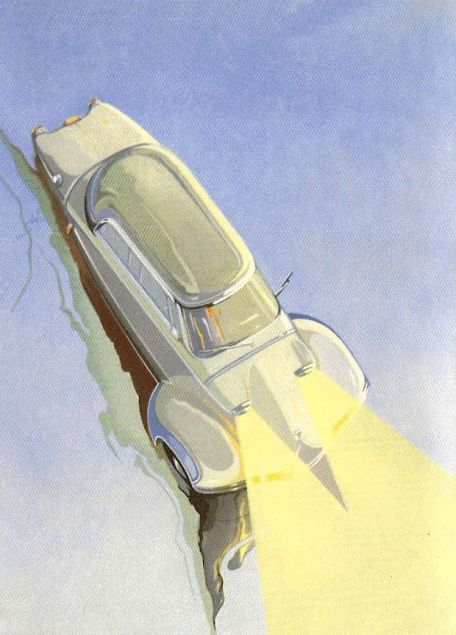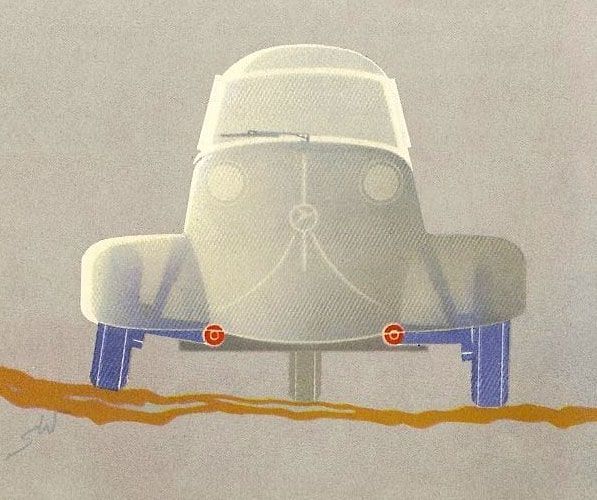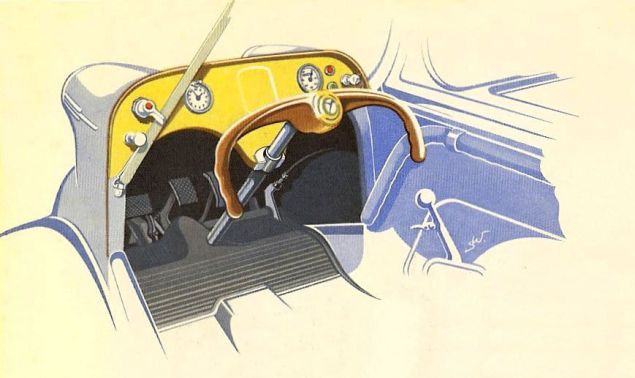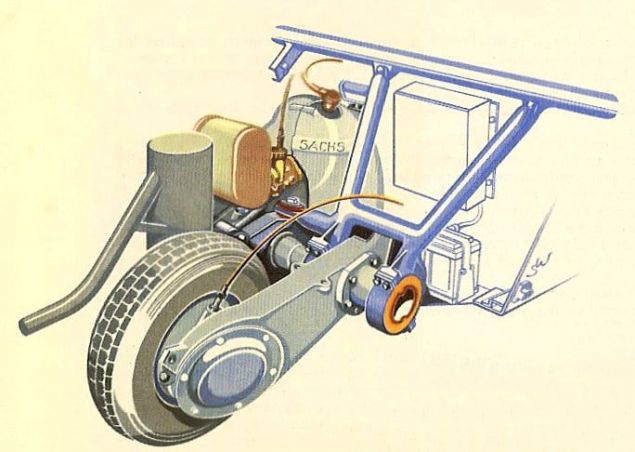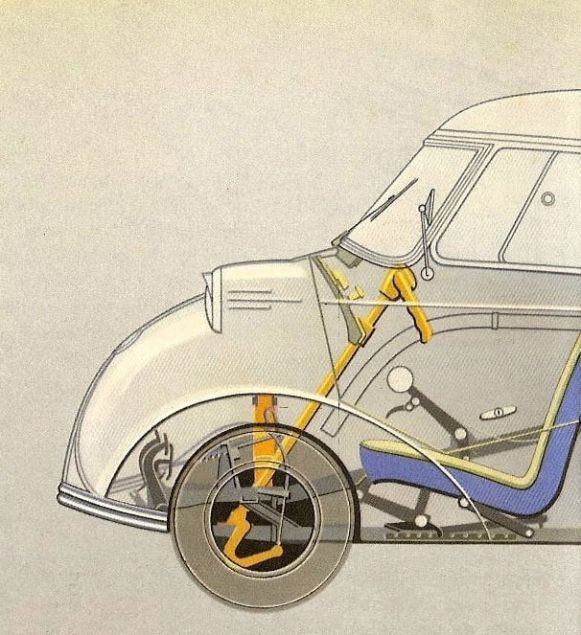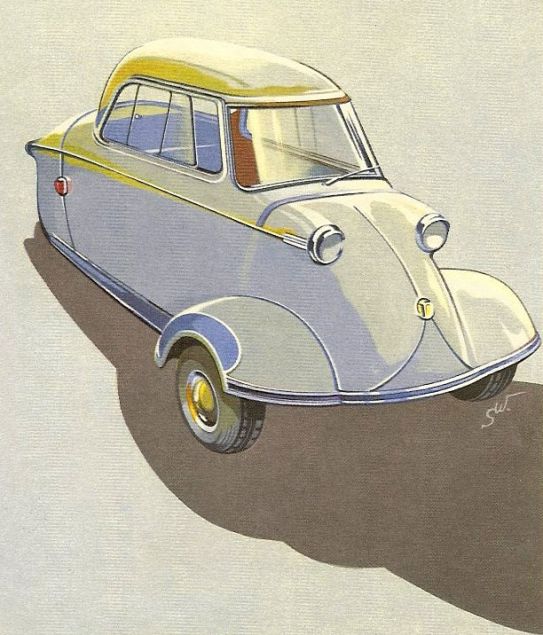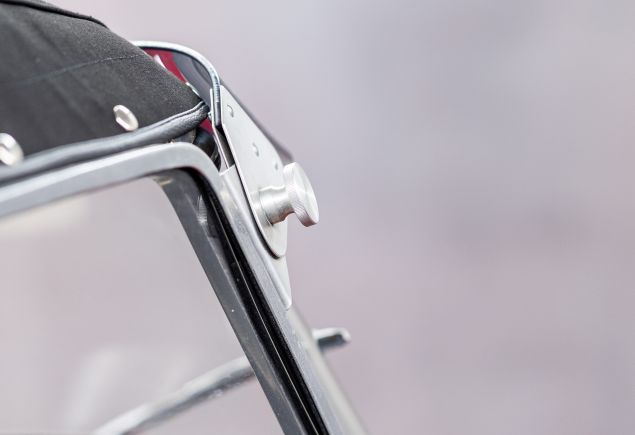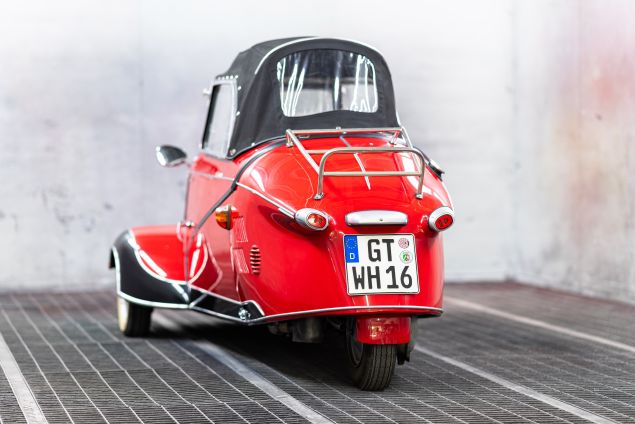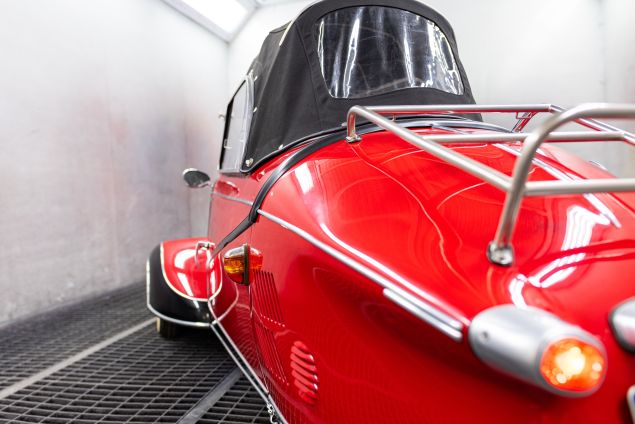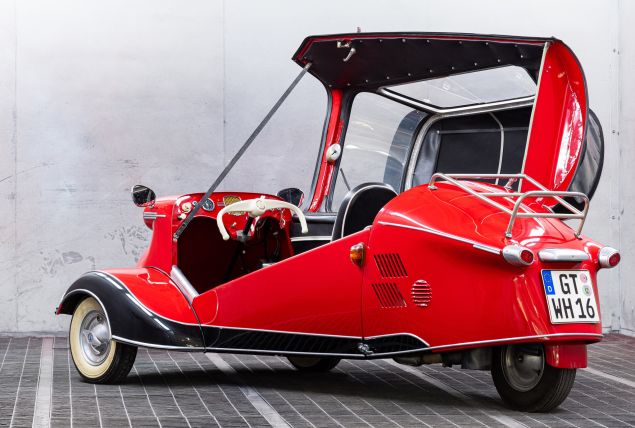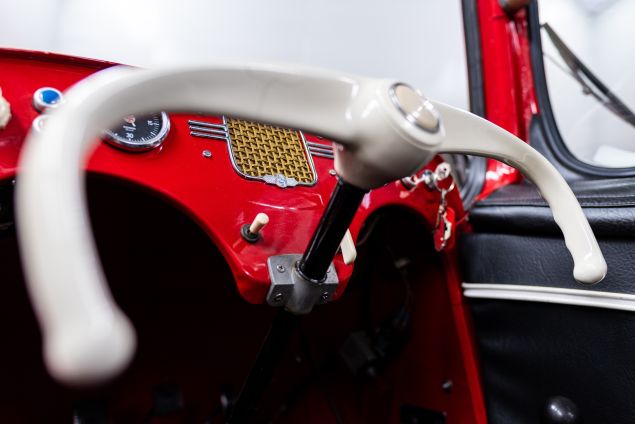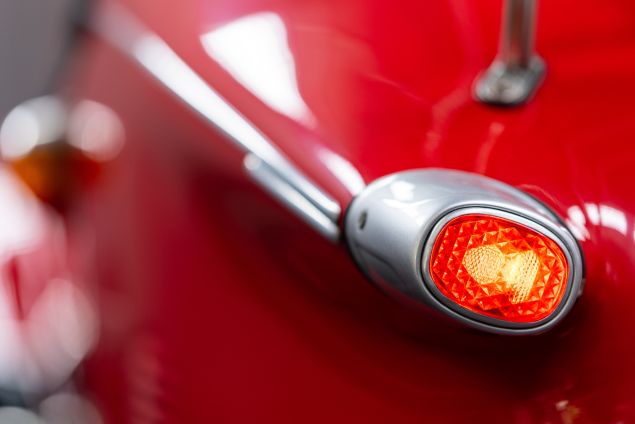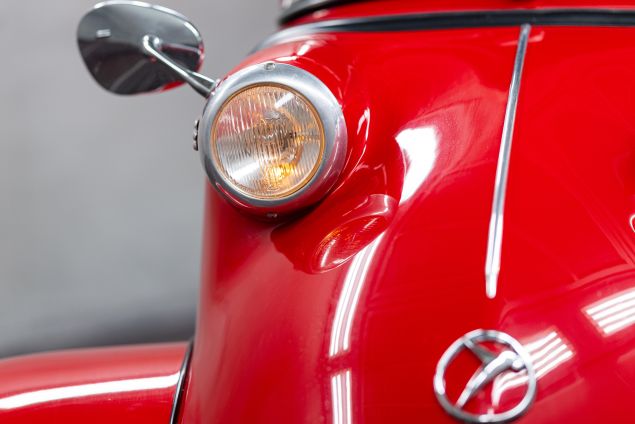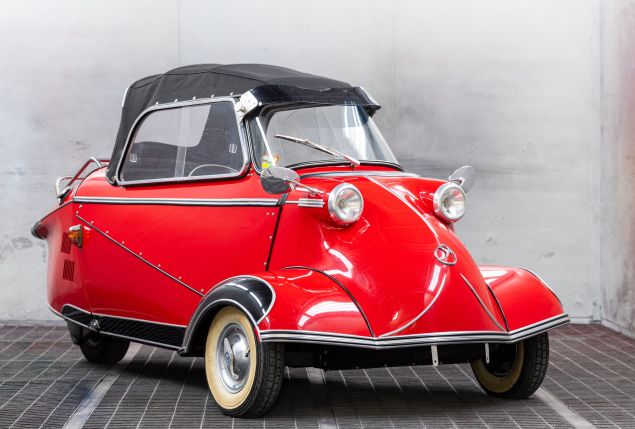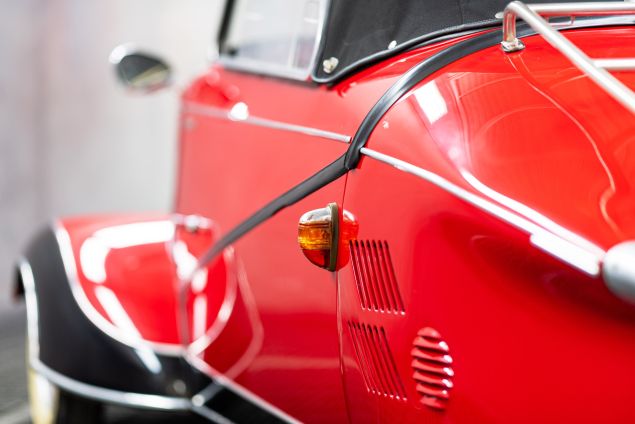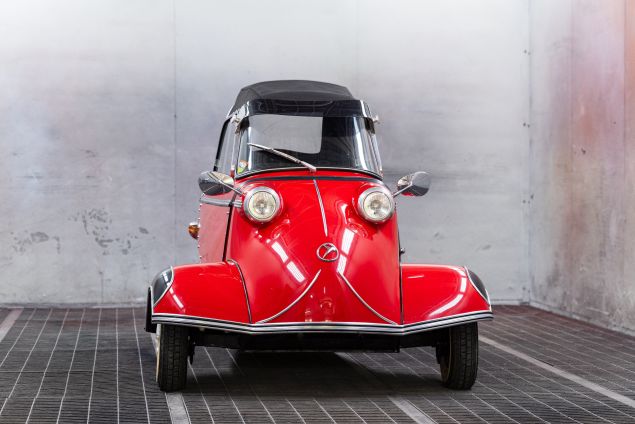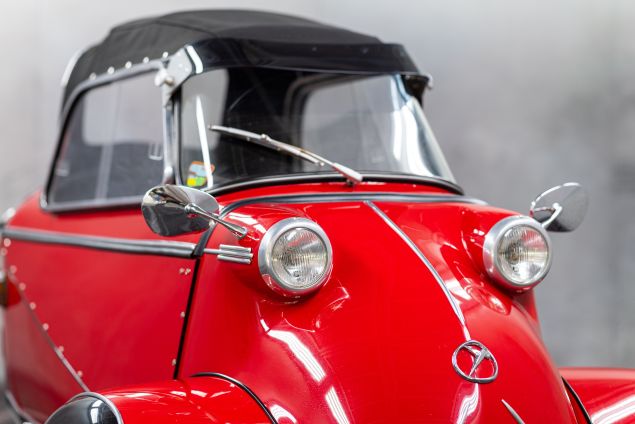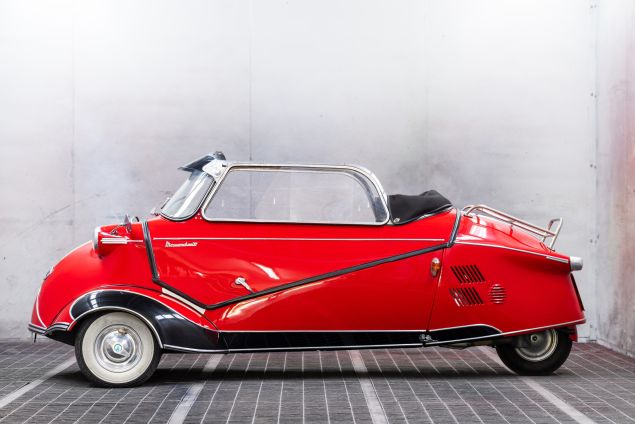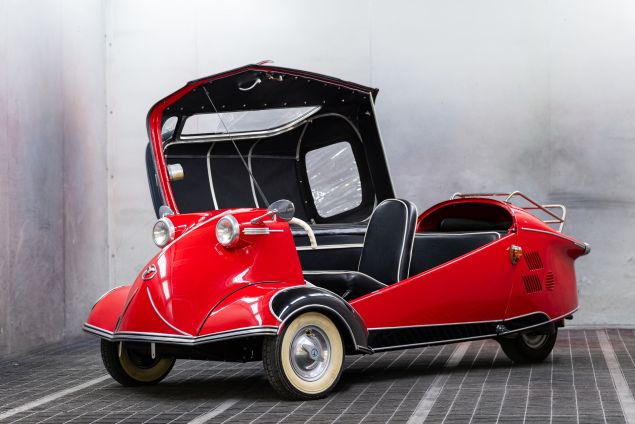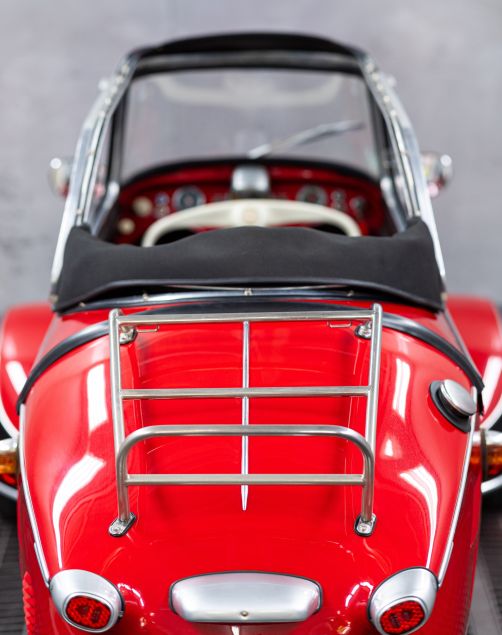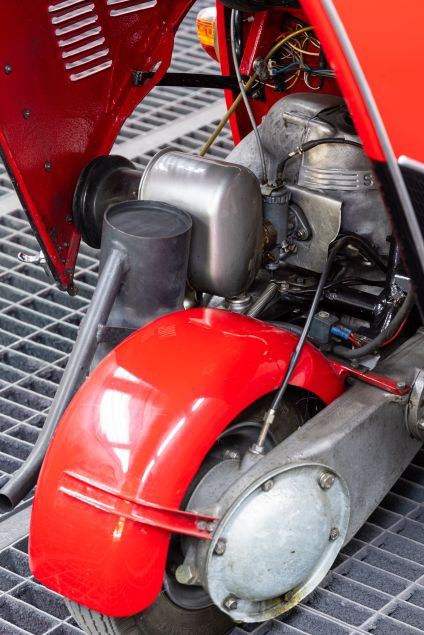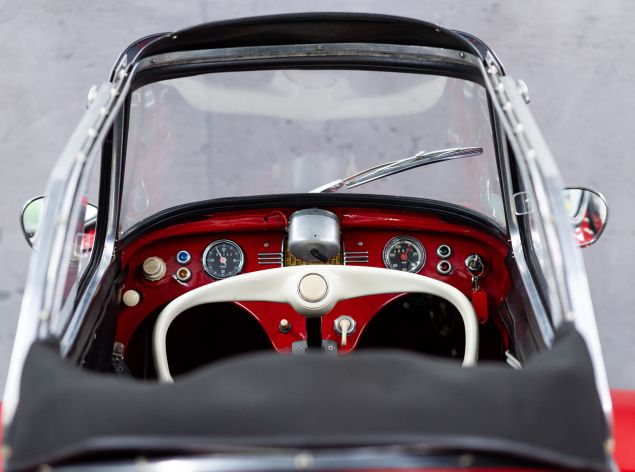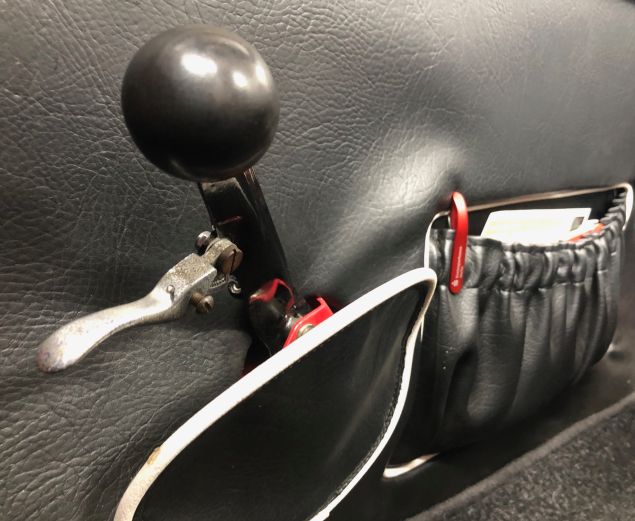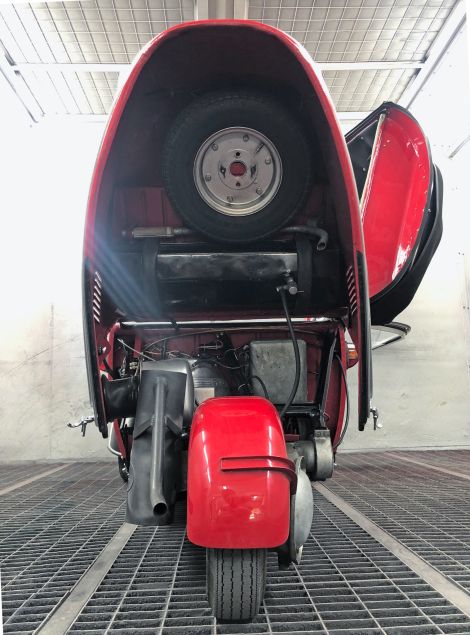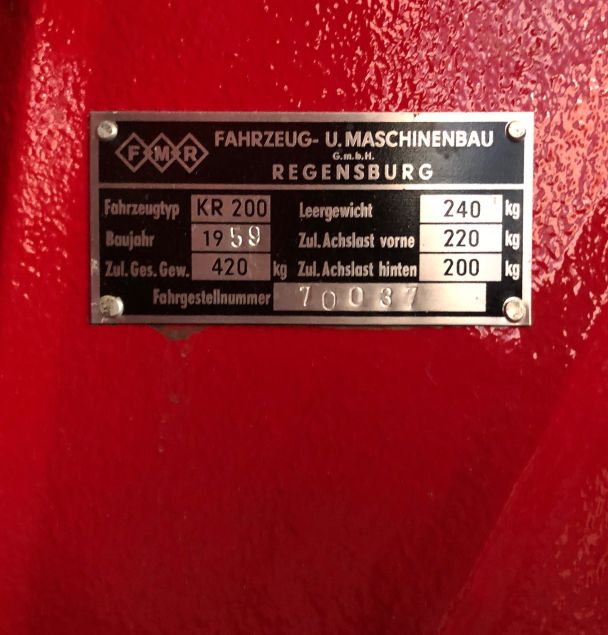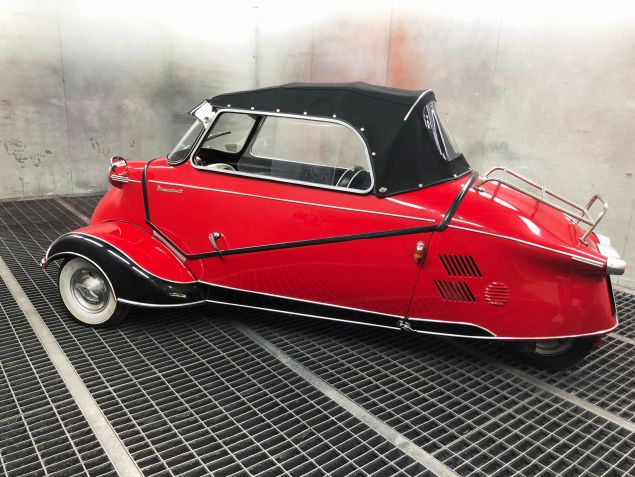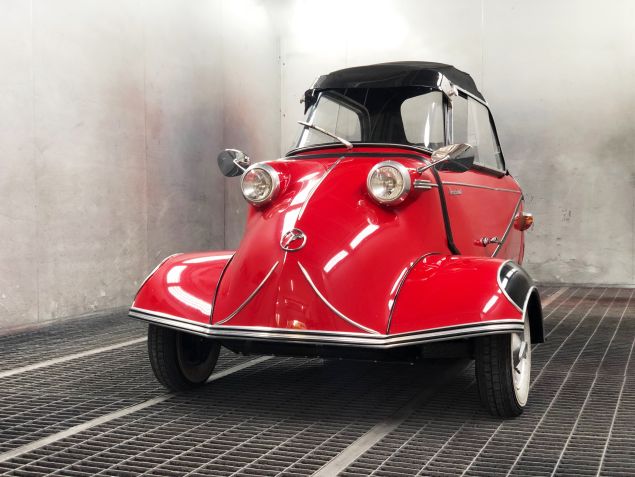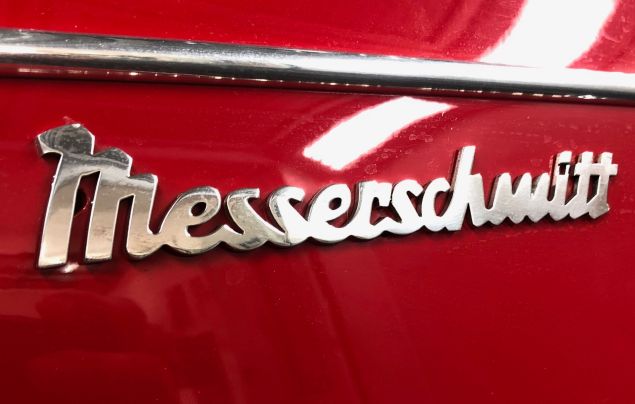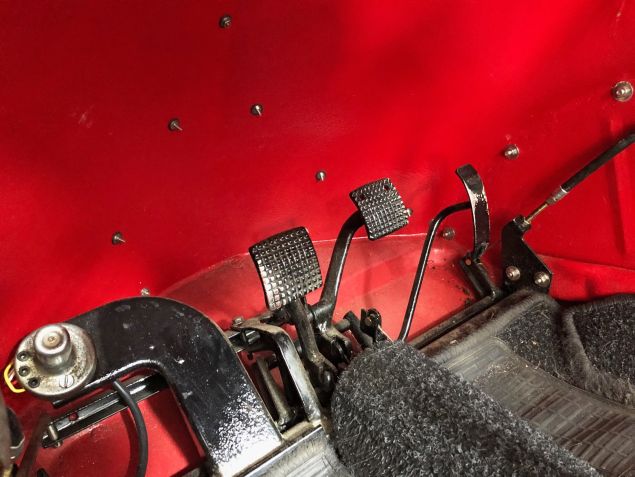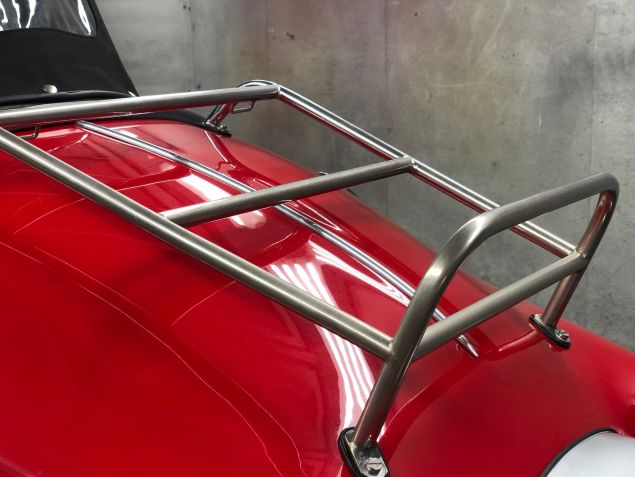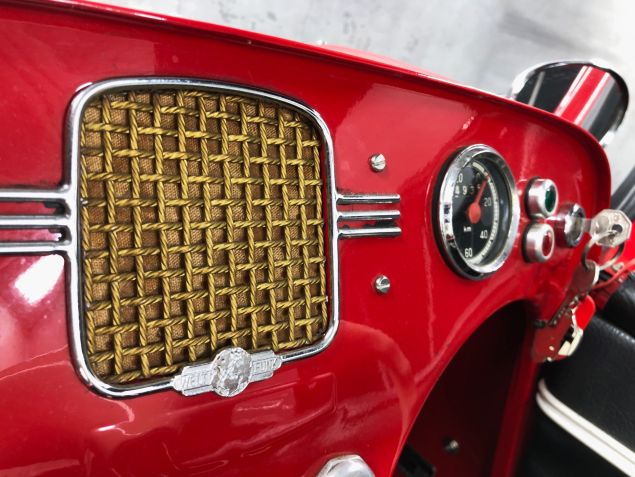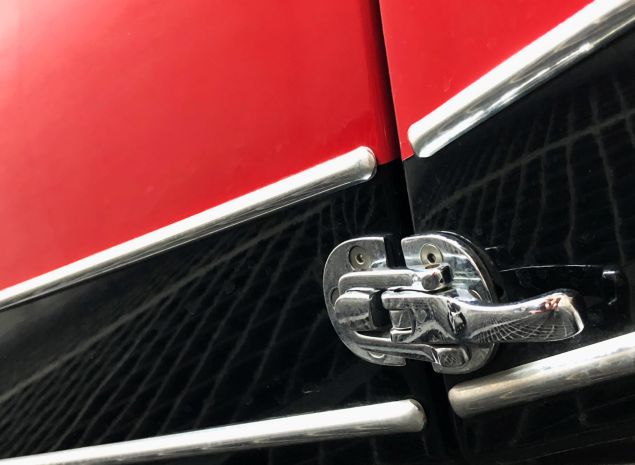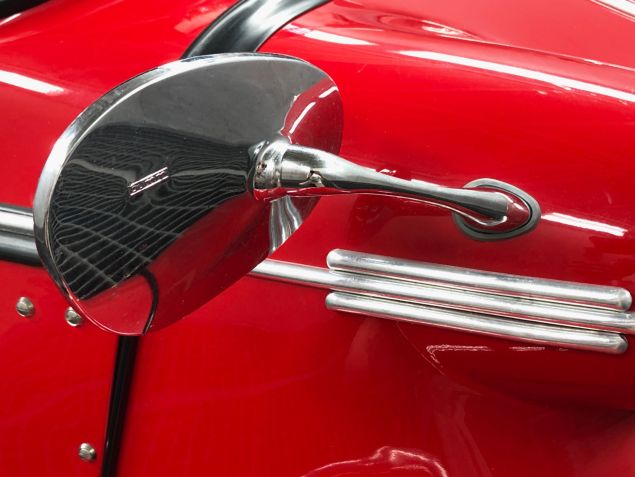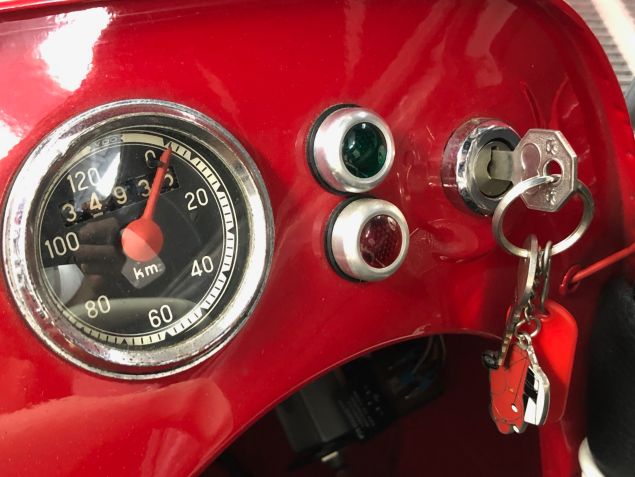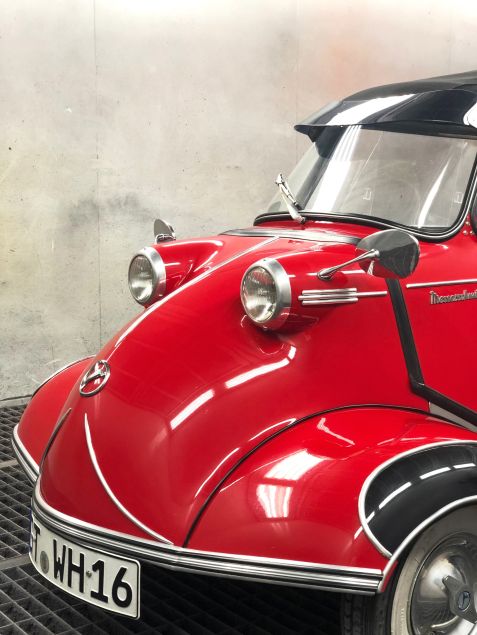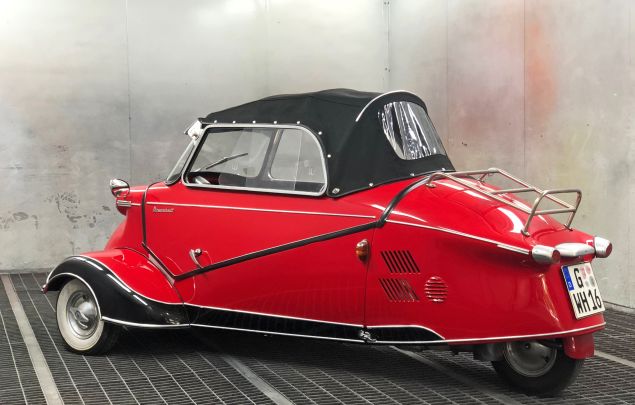The historical prototype
Cabin Scooter Messerschmitt KR-175 & KR-200 / KR-201
Fritz Fend & Willy Messerschmitt
Fritz Fend had been a development engineer in aircraft construction during the Second World War. After his first cabin roller design as a vehicle for war invalids had shown the limits for non-motorised vehicles, he recalled his collaboration with his former employer, Prof. Messerschmitt. Together they further developed Fritz Fend’s initial idea, adhering to the iron rules of aircraft construction: optimised power-to-weight ratio, reliable propulsion, robust undercarriage and at the same time low consumption of resources, i.e. of material, construction time, space and fuel. The KR-200 came onto the market at the beginning of 1955 as a further developed cabin scooter. The Plexiglas dome opening to the side was reminiscent of a fighter plane, and the front wheel arches also looked like the stubs of wings. The “all-round glazing” also gave the cabin scooter mocking names such as “Man in Aspic” or “Snow White’s Coffin”.
Despite all its nicknames, the 90 km/h historic model was much sought-after because it could keep up with much larger and more expensive models on the road. The 191cc two-stroke engine with around ten horsepower drew its power from just one cylinder. In the first version, the mixture in the piston was compressed in a ratio of 6.6 : 1. The compression ratio was later reduced to 6.1 : 1, which cost half a horsepower, but made the already stable Fichtel & Sachs engine even more robust and less sensitive to heat. Thanks to the ingenious design and its air cooling, the engine got much less hot than the people under the glass bonnet. In the summer, therefore, people sometimes drove with the bonnet folded to the side, although the version with the folding top instead of the fixed dome was of course much more elegant. The engine was accessible through a rear wheel cover that could be folded upwards, allowing easy maintenance work from all sides.
Apart from checking the roller chain tension, filters and spark plugs, there was little to do with the KR-175 & KR-200 / KR-201 – it was extremely robust and suitable for long distances. And since its entire engine weight rested on the rear axle, the Messerschmitt was easy to drive even in winter. Only the “jagged” steering could be the drivers’ undoing on slippery terrain. However, this also depended on the type and condition of the tyres. The radial tyres of the time in size 4.40-10 (with inner tube!) were amazingly similar to today’s wheelbarrow tyres. However, the low centre of gravity and the front and rear wheel suspension borrowed from aircraft construction made the Messerschmitt a motor vehicle with exceptionally good handling and at the same time a comfortable ride. The Messerschmitt’s sequential gearstick was also unique: the first gear was in the rear lever position. If you pushed the lever forward, you shifted up; if you pulled it back, you shifted down. The reverse gear was operated by running the two-stroke engine backwards. To do this, the engine had to be switched off and then restarted via a special key position. This made the crankshaft run backwards. However, it was also possible to shift through all the gears in this way, so that the Messerschmitt was theoretically just as fast in reverse as it was in forward!
Fahrzeug- und Maschinenbau Regensburg GmbH (FMR)
From 1957 until 1964, the KR 200 cabin scooter and its successors rolled off the production line at the newly founded Fahrzeug- und Maschinenbau Regensburg GmbH (FMR). In that year Fritz Fend withdrew from the operational business after gradually selling all his company shares to his business partner Valentin Knott.
Messerschmitt KR-200 (1959)
| KR200 / KR201 | |
|---|---|
| Manufacturer | Messerschmitt |
| Motor | Fichtel & Sachs Zweitaktmotor |
| Seats | 2+1 |
| Number of cylinders | 1 |
| Bore / Stroke | 65 x 58 mm |
| Cylinder capacity | 191 cm3 |
| Power | 10.2 hp (7.6 KW) at 5250 rpm later 9.7 hp (7.2 KW) at 5000 rpm |
| Compression | 6,6 : 1 , later 6,3 : 1 |
| Carburettor | 1 Bing slanted jet carburettor |
| Cooling | Blower / Air |
| Lubrication | Mix 1 : 25 |
| Battery | 12 V 14 Ah next to motor |
| Power transmission | Drive via encapsulated roller chain to rear wheel |
| Clutch | Four-disc oil bath clutch |
| Gearbox | Four-speed gearbox with electrically shifted reverse gear |
| Chassis | Independent wheel suspension |
| Steering system | Almost direct Ackerman steering with lever transmission and motorcycle-like handlebars |
| Wheelbase | 2030 mm |
| Track width | front 1080 mm, rear 1 wheel |
| Dimensions | L: 2820 mm W: 1220 mm H: 1200 mm |
| Tyres | 4,00" x 8" |
| Unladen weight | 240 kg |
| Turning circle | 9 m |
| Gross vehicle weight | 420 kg |
| Maximum speed | approx. 90 km/h |
| Consumption | ca. 4,5 l/100 km |
| Fuel tank | 12.5 litres above engine |
| Year of manufacture | February 1955 until January 1964 |
